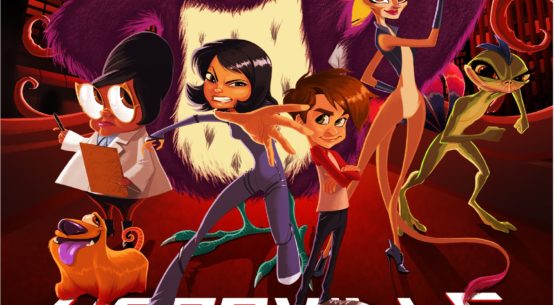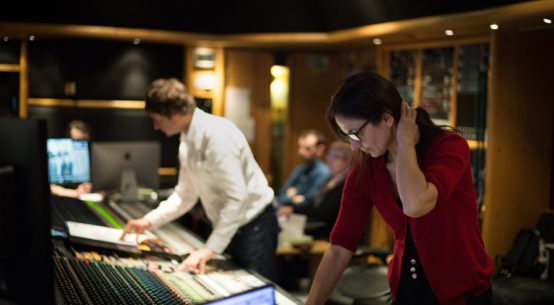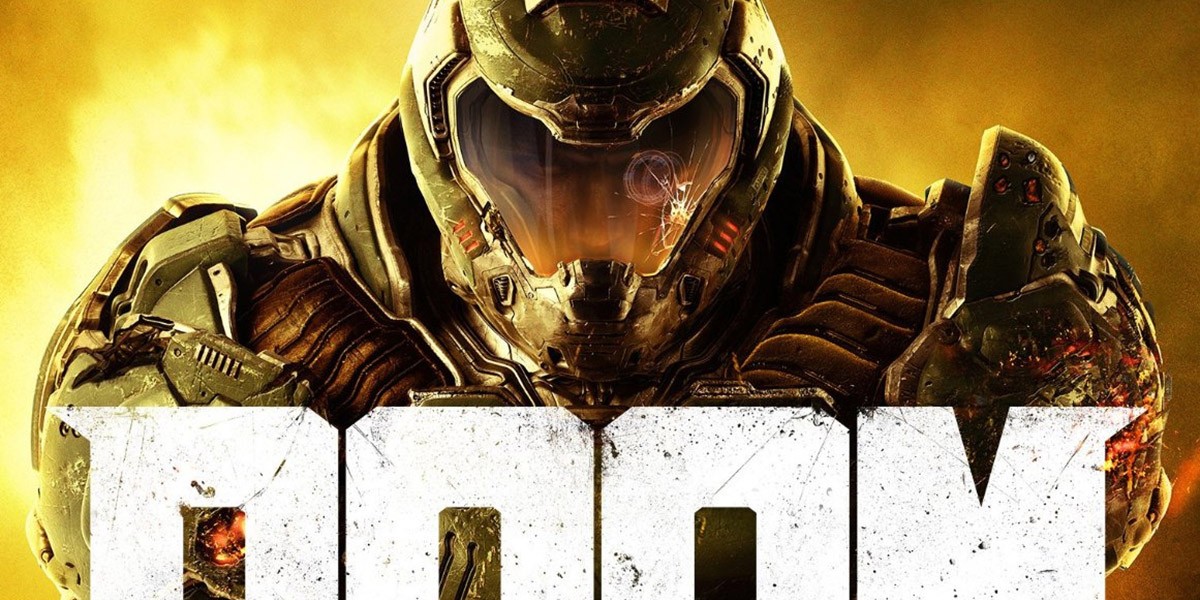
Review by Matt Hellewell
Edited by Sam Hughes
Developer: id Software
Publisher: Bethesda Softworks
Composer: Mick Gordon
Audio Director: Chris Hite
Reviewed on: Xbox One
The Doom campaign begins with your character awakening in a Martian facility, unaware of where he is or how he got there. As the story unfolds you start to piece together the character’s origins, as well as build up an arsenal of weapons that if used correctly can be a deciding factor in success or failure, even more so in the higher difficulty settings.
You are tasked with closing a portal that has turned the facilities employees into possessed zombie like creatures caused by ‘Lazarus Waves’. The portal also allowed demons to ascend from hell to massacre anyone not already mutated by possession.
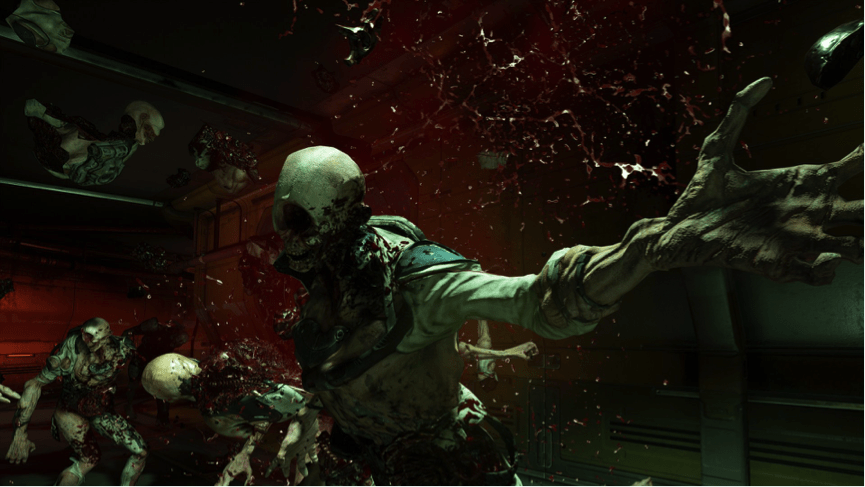
Music
Playing through the campaign I have to agree with Doug in his observation that Mick Gordon was the perfect guy for the job. His compositional style complements the gameplay and aesthetic perfectly. In the cut scenes especially, there is one moment where the music ends on the character reloading his shotgun, that is timed so perfectly with the music it makes you feel like a badass! Musical stingers also play when you make a kill and the transitions from the action music back to exploration are synced to the final enemy death. It works especially well with a glory kill as the transition ends just as you snap a demon’s neck …awesome!
The music is epic and refreshing as it stands out among other FPS games that use typical orchestration. The ‘BFG Divison’ track really defines that repetitive, destructive feeling as well as really demonstrating the awesome production on the soundtrack. The whole soundtrack is is grungy and dirty with a mix of growling synths and a well mixed acoustic drum kit full of energy that would be suited to a metal track in timbre, alongside that industrial clinical production, not far from bands like Nine Inch Nails. It also has that clean structure to it as with industrial music and certain tracks that really sell the soundtrack to me are “Main Theme” with it’s dark, deep and heavy interpretation of the original DOOM theme, and “Rip and Tear”, which really lives up to it’s name in helping you want to tear your enemies apart! If hell had music festivals I would like to think this is what they would play, which I believe they must as the sound track has some hidden messages when viewed in a spectrogram!
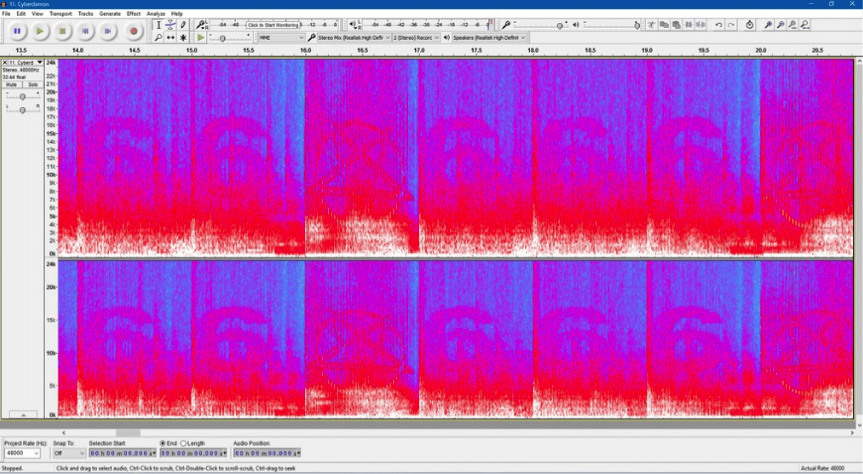
With old and new working in tandem it seems a fitting way to compliment this new title whilst paying homage to the original franchise. Compared with the original franchise the music in Doom does borrow from current musical trends, however not to the extent of the original compositions by Robert Prince, in some cases the similarities are uncanny! Try listening to No Remorse by Metallica then the original Doom E1M1 track.
My only criticism of the music is that there is lots of it, I would say too much but this does seem to be a trend in Bethesda releases, a prime example would be Fallout 4. I would have liked room in the music to allow the sound design to come through in the moments where you are either exploring or everything isn’t trying to tear you limb from limb. Although taking this into consideration the music doesn’t become too tiring, it really ramps down in these sections to subtle drones but still covers up some of the ambience of the levels, ambience that is supposed to be there to sell the environment to the player.
Dialogue
The first room that you find yourself in has the hologram of some facility personnel. The dialogue seemed not be attenuated in any way and felt as though it was just a basic stereo recording being played directly into my ears. At this point the character doesn’t have the Praetor Suit equipped so I would say this feels a little odd. I would have liked this to be given more directionality and attenuation, not least so I knew which of the holograms was speaking. It could have been that because these were holograms the audio was being played through the rooms PA system but this was not made obviously clear either. The voice acting takes me back to the original Total Recall movie where lots of acting was done through pre-recorded messages or video link to the main character, this works well with the overall aesthetic of the game, after all that’s set on mars too!
Sound Design
The screeches of the enemies – although blood curdling and unsettling – suffered from a similar issue to the hologram dialogue discussed earlier. If I was above a group of enemies their screeches would move around but would all of a sudden would sound like they were right on top of me, it did make me spin around a few times until I realized what was happening. There was also no occlusion to the sound as I could be stood in the rooms rafters with a metal plate floor separating us and still hear the sounds of enemies as if they were directly in front of me with no obstructions.
The campaign does have a rich and believable ambience, although I have to reiterate that the music never stops. The E3 trailer shows how the sound design is allowed to really shine through when it matters. It’s a shame that after playing through the campaign I have not noticed any point where the music isn’t playing some role in bolstering the sound design when it simply does not need it. Doug talks about how there were little to no ambient sounds in the beta and I did find this to still be the case in places. Whilst playing the level ‘Meltdown’ I found that traversing to the lower sections of the map down a broken stairwell, there are no ambient sounds at all! The player’s footsteps can be heard but the molten rivers flowing all around you make no sound, it is deathly silent and completely removes you from the experience.
One pitfall was the sound of walking on sand, it sounded more akin to gravel and became a little distracting. Maybe a subjective point but it seemed a little gritty for the thick layer of sand that had been deposited by the wind. The wind itself was attenuated well and changed realistically as you approached cliff edges or large chasms. The player HUD was one of my favorite parts of the experience. The sounds are very processed (in a good way), granulated and stretched then broken up into micro-sound and then reassembled it seems. Perfect really.
Doug mentions that the sounds used for melee takedowns or ‘glory kills’ felt in some cases unfinished. With the final release I would still have to agree, more layers and some low-end presence would have been a welcome addition. That said when the player performs a less frequent variation of a glory kill the sounds of tearing flesh and bones snapping do seem fuller and more rewarding as you tear off a few jaw bones! A nice addition to these was a drop in volume and some LPF on everything else so you really hear the detail of the crunching and gurgling …nice!
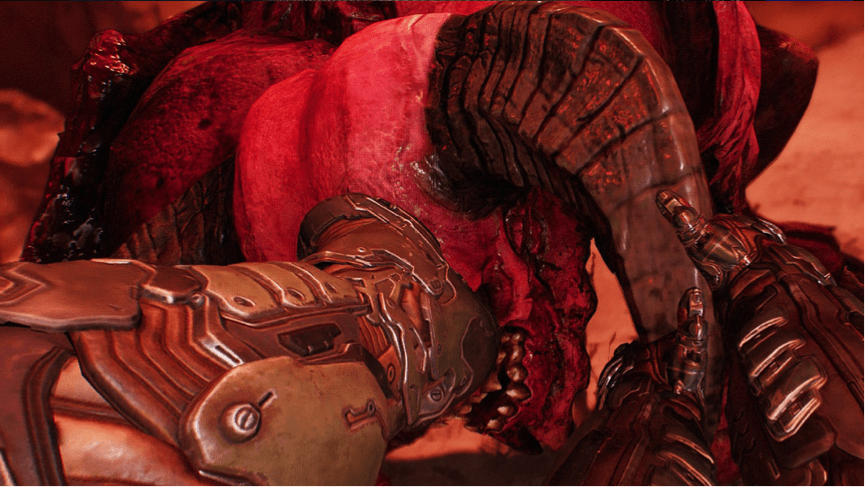
The weapons sound great but could sound even better. The pistol you start the game with has nice layers of low-end mechanical punch and synthetic highs that create a nice pulse sound as you fire. This is very apt as the weapon has some nice flashy lights and motorized parts. The charging of the weapon gives nice audible feedback when it’s charging and when it has finished, very useful as you don’t really get chance to let your eyes stray away from the onslaught. The same goes for all the weapons, they sound really good with lots of attention to detail, but they lack a nice reverb tail. This could have been implemented with separate reverb tails that would be called upon as the player entered the appropriate area, piecing the gunfire and reverb tail together through a process of concatenation. As mentioned by Kyle Fraser in his interview for Sound Design Academy earlier this year, Halo 5 used a similar process for its weapons and you can hear the effect the power of the weapon is having on the space it’s in. Maybe Doom does have something like this but it’s not very distinguishable. Similar to the dynamic mixing during a glory kill, a dip in volume for things such as ambiences would make space for the weapon sounds to make it feel like the loudest, most powerful thing on the battlefield at that moment. Sadly the lack of bullet collision or recoil sounds were a little disappointing, I spent time shooting at various surfaces and I heard no evidence of impact sounds at all. These missing aspects take away so much that it’s hard to imagine that these weapons could be anything more than imaginary.
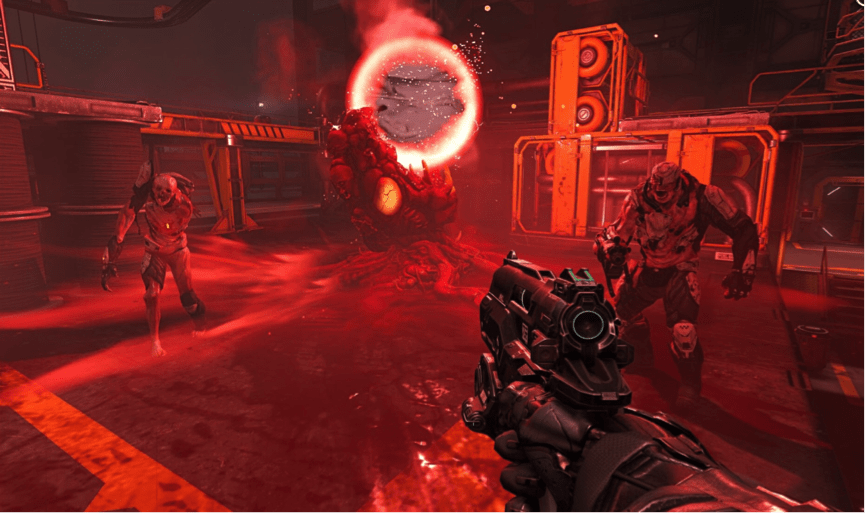
Conclusion
Lots of things have been addressed since the beta and I’m sure you will all be very pleased to hear how it’s evolved from Doug’s original review on the beta, but there are still areas that would benefit from some subtle additions here and there. An example would be the weapon tails and bullet collisions. I would have expected this from a game that’s so heavily weapon orientated. The choice of weapon in scenarios can determine the outcome significantly so it feels as though something so crucial to the experience would not be given the full treatment.
Despite the few criticisms I have mentioned overall the game does sound amazing. The game is a work of art (albeit one made of blood and bone fragments) and my gratitude goes out to the talented team that made it possible. Thank you!
LINKS
Official
We hope you enjoyed Matt’s review, check out others in our Reviews section. Don’t forget to sign up to our Monthly Newsletter to make sure you don’t miss out on our reviews and interviews.
We’re also running a Patreon campaign to make sure we can keep bringing you regular, high quality content if you’re feeling generous! Thanks for even sharing!
The Sound Architect



